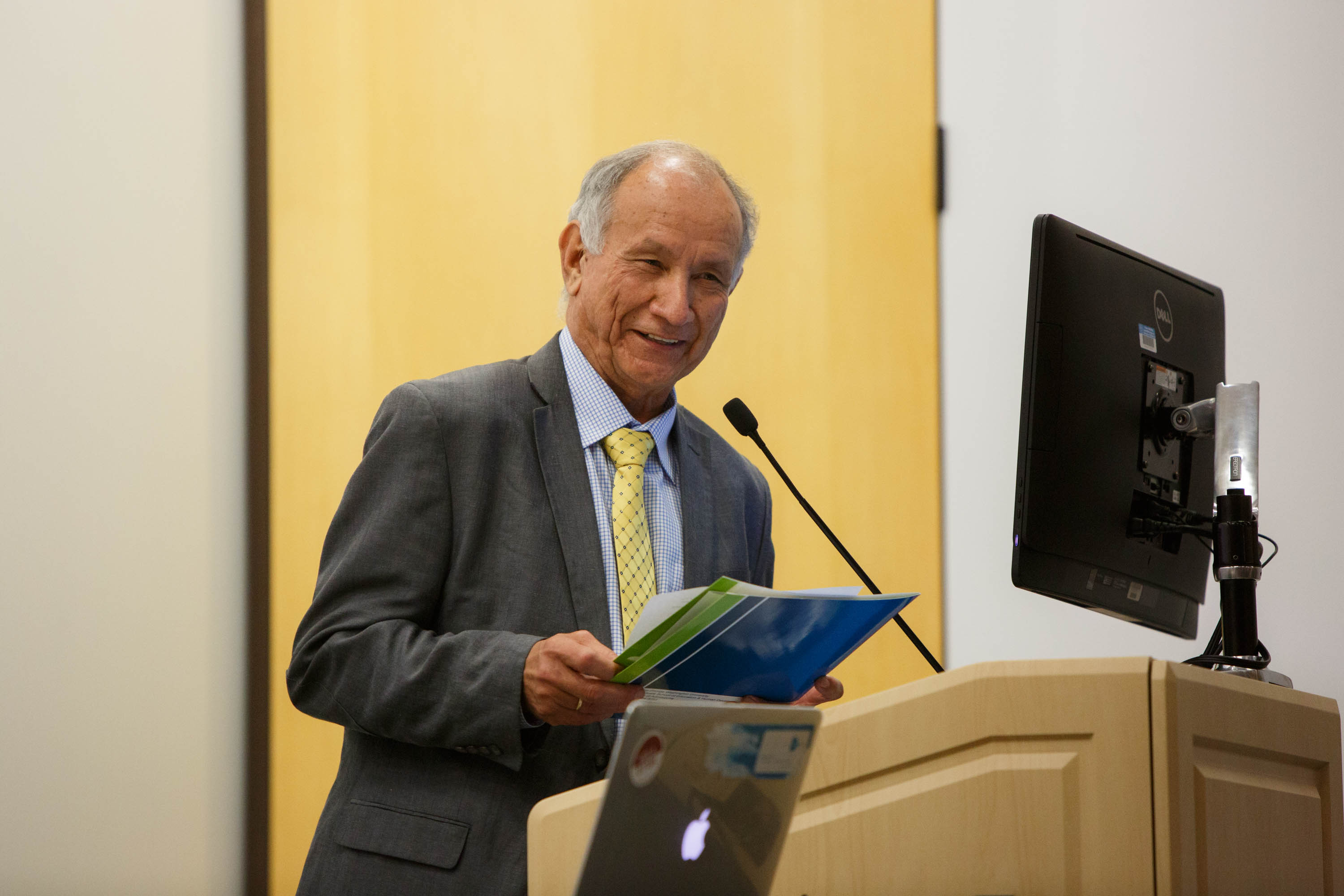By Ruth Steinhardt
Joel Gomez grew up in a close-knit, Spanish-speaking home in rural Texas and had learned little or no English by the time he entered school. Teachers at the small-town Catholic school he attended organized classes strictly by order of performance, with the highest-graded students at the front and lowest in the back, and in his first year of school Joel was consistently at the bottom—and the back—of the class.
But after five years of sink-or-swim immersion in English, he was the class’s strongest student and sat at its head.
Now, as an associate professor of educational leadership and director of the Institute for Education Studies at the George Washington University’s Graduate School for Education and Human Development, Dr. Gomez will lead an initiative to help English language-learner (ELL) students like the boy he once was.
Dr. Gomez and his team will be funded by the Department of Education’s National Professional Development Program, receiving $2.5 million over five years to train public school teachers and educational administrators in areas of Virginia with high populations of ELLs.
Dr. Gomez’s program, developed with co-principal investigator and fellow GSEHD Professor Lottie Baker, will primarily target teachers in content areas like science, history and math.
“One of the major challenging factors today for students is learning the academic language they need for school,” Dr. Baker said.
Grammatical foibles intuitive to English-speaking students can be difficult for ELLs to parse. The passive voice, for instance, tends to crop up more in science classes. Students are likely to hear phrases like “The species was discovered by scientists” rather than the more straightforward active voice likely to be familiar to ELLs: “Scientists discovered the species.”
Drs. Baker and Gomez said it was understandable that teachers might not even register these differences. Their program will both raise educator awareness and demonstrate techniques for teaching explicitly around these challenges.
The DOE-funded program will consist of a 12-credit online graduate certificate for working educators. The Virginia Department of Education will help identify and select participants. Each cohort will also participate in several in-person “institutes” to which they can bring colleagues—fellow teachers, administrators and specialists.
“We really want to build a community to serve these learners,” Dr. Baker said. “It can’t be just one teacher in a classroom with the door closed.”
Drs. Baker and Gomez hope that bringing a variety of educators into the program will help instigate a necessary cultural shift. Virginia has one of the country’s highest percentages of ELL students, and those proportions are increasing.
And ELL students are not a homogenous group. After English, the second most widely spoken language in the United States is Spanish. But the third most-spoken varies unexpectedly by state. In Virginia, the most-spoken language after English and Spanish is Korean; in Maryland it's French; in Pennsylvania it’s Italian. Even within similar language groups, there may be cultural and linguistic gulfs between families who are highly literate and educated in their first language and those who are not.
Drs. Baker and Gomez say that’s why schools should move to include ELLs, rather than wait for disparate populations with many competing needs to transform themselves.
“As [educators], we need to transform our own thinking,” Dr. Gomez said. “How can we change to meet this growing population?”


